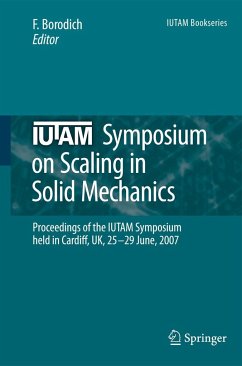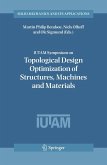This volume constitutes the Proceedings of the IUTAM Symposium on 'Scaling in Solid Mechanics', held in Cardiff from 25th to 29th June 2007. The Symposium was convened to address and place on record topical issues in theoretical, experimental and computational aspects of scaling approaches to solid mechanics and related elds. Scaling is a rapidly expanding area of research having multidisciplinary - plications. The expertise represented in the Symposium was accordingly very wide, and many of the world's greatest authorities in their respective elds participated. Scaling methods apply wherever there is similarity across many scales or one need to bridge different scales, e. g. the nanoscale and macroscale. The emphasis in the Symposium was upon fundamental issues such as: mathematical foundations of scaling methods based on transformations and connections between multi-scale approaches and transformations. The Symposium remained focussed on fundam- tal research issues of practicalsignicance. The considered topics included damage accumulation, growth of fatigue cracks, development of patterns of aws in earth's core and inice, abrasiveness of rough surfaces, and soon. The Symposium consisted of forty-two oral presentations. All of the lectures were invited. Full record of the programme appears as an Appendix. Several of the lectures are not represented, mainly because of prior commitments to publish elsewhere. The proceedings p- vide a reasonable picture of understanding as it exists at present. The Symposium showed that scaling methods cannot be reduced solely to dimensional analysis and fractal approaches.
Bitte wählen Sie Ihr Anliegen aus.
Rechnungen
Retourenschein anfordern
Bestellstatus
Storno








